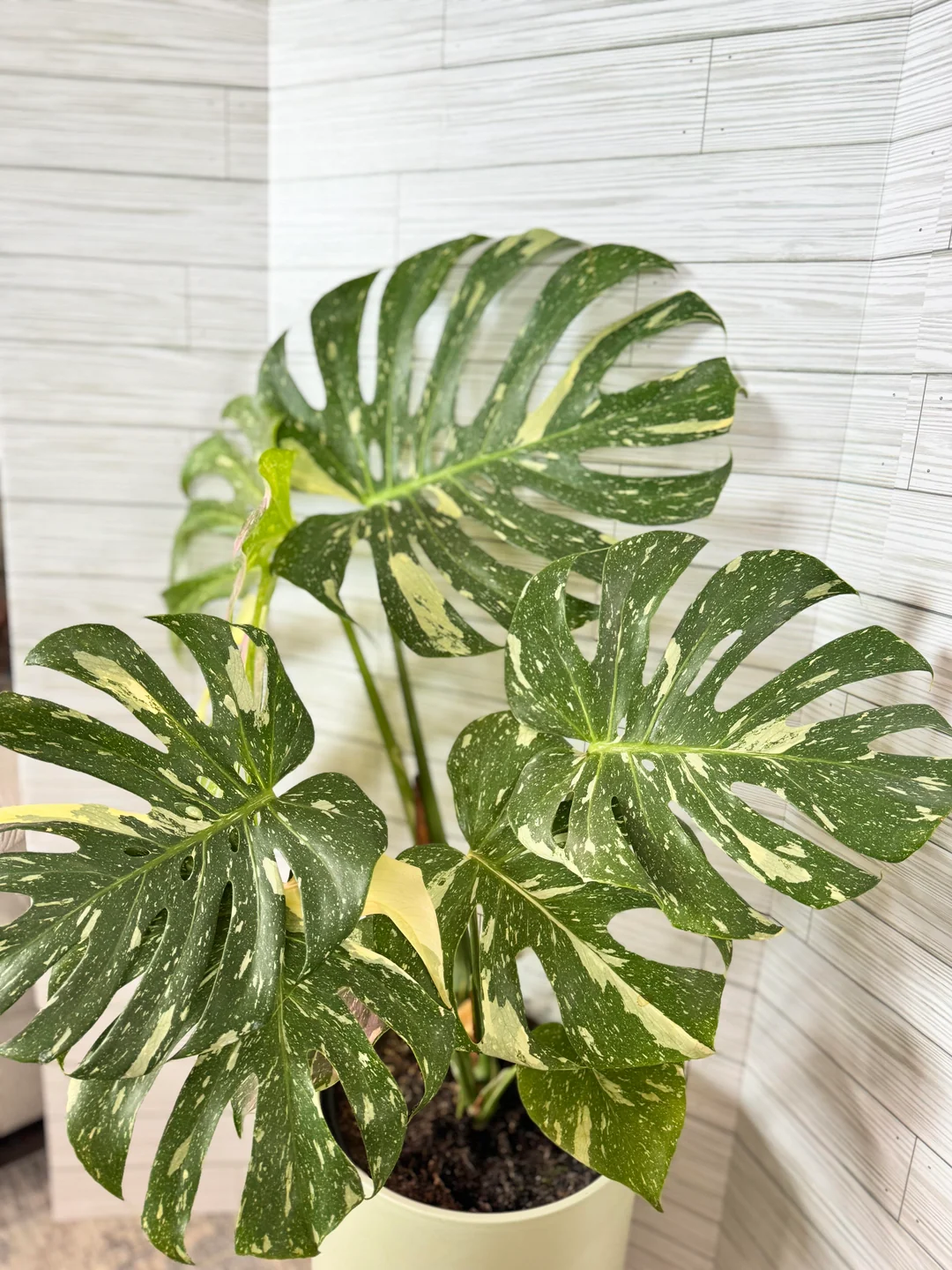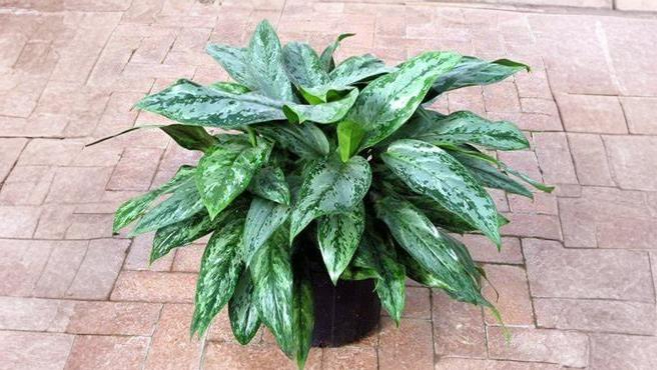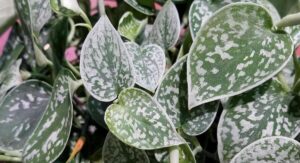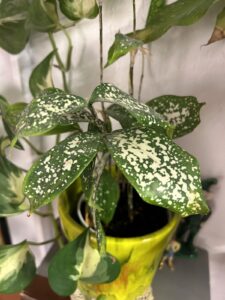
Known for its striking variegated foliage in shades of green, cream, and pink, this low-maintenance plant is a gorgeous addition to any indoor garden.
The Thai Con Aglaonema is a variety of Aglaonema, which is commonly known as the Chinese Evergreen, is a showstopper thanks to its colorful leaves and easy-going nature. It belongs to the Araceae family and is native to tropical and subtropical regions of Asia and New Guinea. These plants are prized for their attractive foliage, ease of care, and ability to thrive indoors. With its ability to tolerate lower light conditions and minimal watering, it’s no wonder the Thai Con Aglaonema is a sought-after houseplant.
If you’re ready to add this beauty to your collection, here are three expert tips to help you care for your Thai Con Aglaonema and keep it looking its best.
In this article
How to care for a Thai Con Aglaonema
Before diving into care, it’s important to note that the Thai Con Aglaonema is toxic to pets if ingested, so be sure to keep it out of reach of curious cats and dogs. Now, let’s get into how to keep this plant thriving.
Place your Thai Con Aglaonema in bright, indirect light

The Thai Con Aglaonema does best in bright, indirect light, which helps maintain its vibrant variegated colors. While it can tolerate lower light conditions, too little light may cause the colors to fade and slow its growth.
‘This plant thrives in indirect sunlight but will scorch if exposed to direct rays for too long,’ explains Lisa Eldred Steinkopf, plant expert at The Houseplant Guru. ‘A spot near an east- or north-facing window is perfect, or use a sheer curtain to soften the light coming through brighter windows.’
If your space doesn’t get enough natural light, consider using a grow light like this one from Amazon to ensure your Thai Con Aglaonema gets what it needs to stay vibrant.
Water moderately and let the soil dry out between waterings
One of the reasons the Thai Con Aglaonema is such a low-maintenance plant is its ability to go without frequent watering. Overwatering can lead to root rot, so it’s important to let the soil dry out slightly between waterings.
‘Allow the top 1-2 inches of soil to dry out before watering,’ advises Jeannie Psomas, plant expert and owner of The Plant Lady: San Francisco. ‘Use your finger to check the moisture or a soil moisture meter for accuracy.’
Make sure the pot has drainage holes to prevent water from sitting at the bottom, and always empty the saucer after watering. During winter, you may need to reduce watering as the plant’s growth slows.
Keep the humidity level moderate to high

As a tropical plant, the Thai Con Aglaonema thrives in moderate to high humidity. While it can adapt to average household humidity, higher humidity will help the plant grow lush and vibrant.
‘If your home is dry, especially in the winter, mist the leaves occasionally, place a pebble tray filled with water under the pot, or invest in a humidifier,’ suggests Alex Kantor, owner of Perfect Plants Nursery.
Planting with other plants
Grouping your Thai Con Aglaonema with other plants can also create a microclimate that boosts humidity naturally. When planting in the same pot, choose plants with similar care requirements to ensure all thrive together.
Top Companion Plants for Aglaonema
- Pothos
Pothos is an excellent match for Aglaonema. Both enjoy low to moderate light and moderate humidity. Pothos also acts as a natural pest deterrent and its trailing vines add visual interest alongside the upright Aglaonema - Peace Lily
Peace Lilies share similar watering and light needs, preferring indirect light and moist (but not soggy) soil. They also purify the air and add a contrasting bloom to your arrangement - Spider Plant
Spider Plants are adaptable to various lighting conditions and have similar watering needs. They also help deter pests and their arching leaves complement Aglaonema’s broad foliage - Cast Iron Plant
Cast Iron Plants are tough and resilient, thriving in similar low-light, moderate-watering conditions. Their long, strappy leaves provide a nice contrast in texture - Philodendron
Philodendrons, especially the heartleaf variety, do well in similar conditions and can be paired for a lush, tropical look. - Dracaena
Dracaena species tolerate similar watering intervals and light levels, making them suitable companions - Peperomia
Peperomia varieties are compact, require similar care, and add diversity in leaf shape and color
Plants to Avoid
- Snake Plant and ZZ Plant
While sometimes recommended, these plants prefer to dry out more between waterings and may not be ideal for the same pot as Aglaonema, which likes more consistent moisture - Succulents and Cacti
These require much less water and more direct light, making them incompatible with Aglaonema’s needs
Example Pot Combinations
| Plant 1 | Plant 2 | Plant 3 | Visual Effect |
|---|---|---|---|
| Aglaonema | Pothos | Peace Lily | Lush, layered foliage |
| Aglaonema | Spider Plant | Philodendron | Varied leaf shapes |
| Aglaonema | Cast Iron Plant | Dracaena | Textural contrast |
Watering and Care Tips
- Water when the top inch of soil is dry, ensuring good drainage to prevent root rot
- Use a well-draining potting mix suitable for tropical foliage plants
- Maintain moderate humidity and avoid direct sunlight for all companion plants
Watch for signs of low humidity, such as browning leaf edges or curling leaves, and adjust as needed.
Final Thoughts
The Thai Con Aglaonema is a stunning and easy-to-care-for plant, making it a favorite for indoor gardeners. By providing bright, indirect light, watering it carefully, and maintaining moderate humidity, you’ll have a healthy, vibrant plant that stands out in any room.







